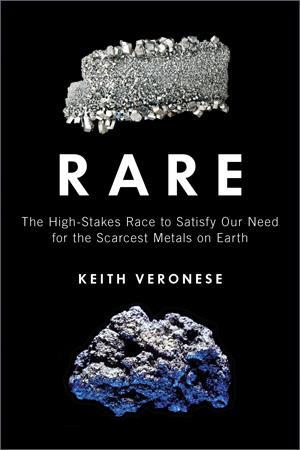Keith Veronese
Prometheus Books
2015 | 280pp | £18
ISBN 978161614927

Metals are implicitly involved in human history – just think Bronze Age, Iron Age and Industrial Revolution. The two most abundant metals, iron and aluminium, are widely used on account of their desirable properties. School children learn about the characteristics of metals – malleability, ductility and high conductivity. Now we have entered an age where metals are not just needed for their structural properties, but for their magnetic and electronic characteristics too. These depend on the particular metal, for which there is no substitute, whether it’s indium for indium tin oxide displays, tantalum for smartphones, erbium for fibre optic cables or neodymium for small strong permanent magnets with many applications (for example wind turbine generators, motors in electric cars, headphones, loudspeakers).
These metals are big business. The main place to obtain them remains the Earth’s crust, even though the seabed is increasingly examined as an alternative – a political minefield, owing to questions of ownership.
Rare is very wide-ranging, covering technical and socio-political topics, such as sea-floor and astromining, synthetic radioactive metals, counterfeiting, rare metal poisons (Tl, Po, Cd), problems in concentrating ores and dirty recycling as well as the implications of wars in Africa for resources, mining in Afghanistan as a way of ending dependence on the opium poppy, and China and its rare earth resources. The author also discusses metals (Be, La, Th, Nd and Hf) with emerging important applications. The book is therefore a very good source of material.
There are a number of points which I would criticise, such as the lack of any diagram or listing of elemental abundance, and confusion over the rare earths. For example, the author refers to 17 rare earths, but only enumerates 15, and in places confuses rare earths (lanthanides plus Sc and Y) with rare metals (such as Nb and Ta). I didn’t find any mention of indium supply.
Rare is often highly US-centric, talking about the Hall process for obtaining aluminium with no mention of Paul Héroult, the French inventor of aluminium electrolysis.
It’s not the last word that could be written about the topic at this stage, but the book is a useful resource for chemists, especially those who may have wondered what all the fuss is about.
Purchase Rare: the high-stakes race to satisfy our need for the scarcest metals on earth from Amazon.co.uk












No comments yet